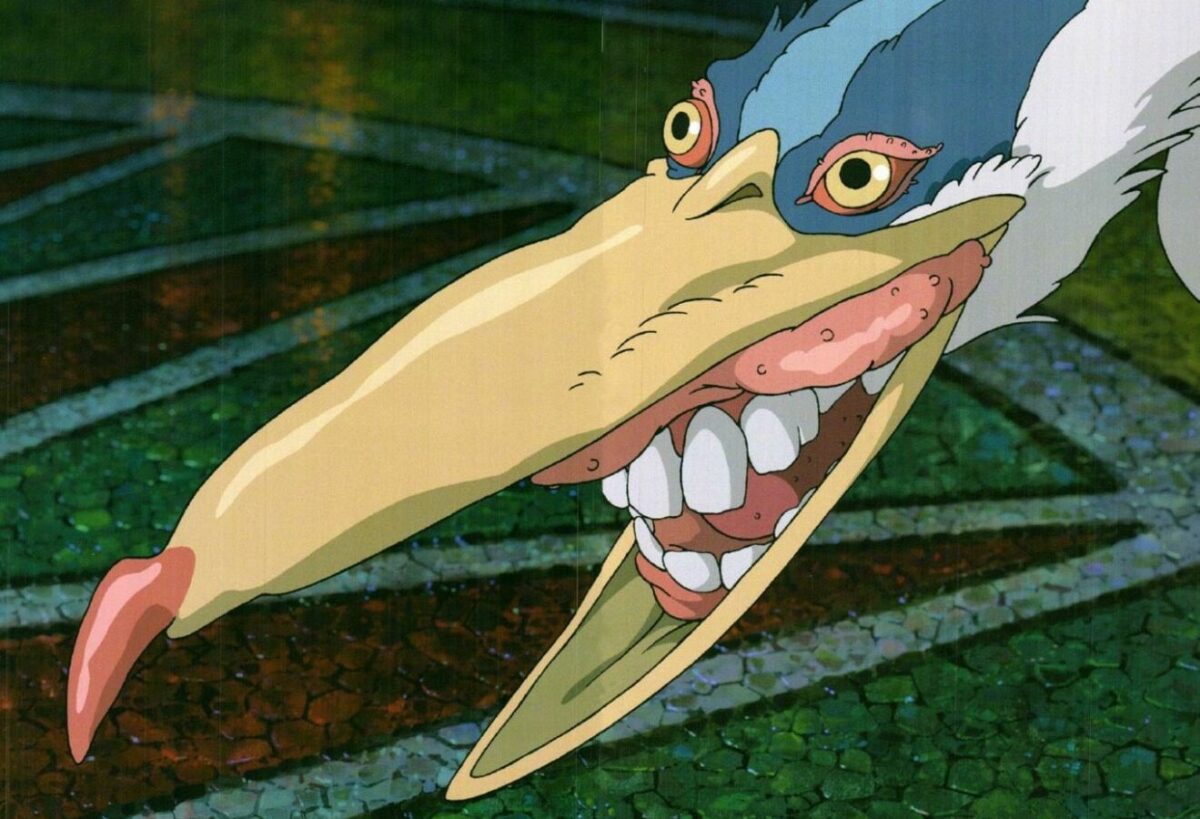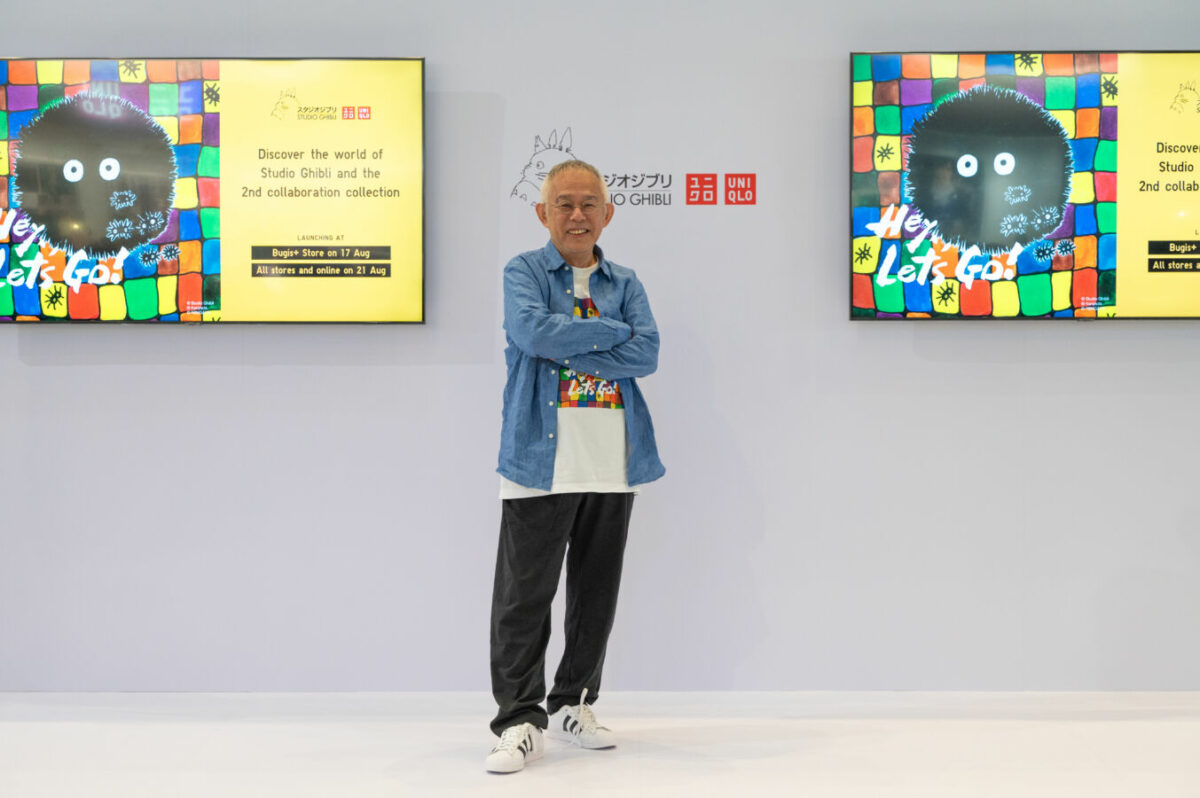This interview has been edited for clarity.
All big dreams start from one small step, and for Studio Ghibli, teamwork has made the dream work for 38 years and counting. Founded by directors Hayao Miyazaki and Isao Takahata, and producer Toshio Suzuki, the beloved animation powerhouse has amassed legions of fans over the decades, with many of its works becoming international household names.
It was the trio against the world, but they slowly left their mark behind – first with 1986’s Castle in the Sky, then Grave of the Fireflies in 1988. My Neighbor Totoro followed in the same year, proving the first two times weren’t a fluke, and the rest is, as they say, history. Having been through the highs, low, and everything in between, it’s no surprise that their partnership has blossomed into ironclad friendship, which flames continue to burn brightly till now, after Takahata’s passing in 2018.

After all, Suzuki’s respect and admiration for Miyazaki runs deep. “There’s only one reason why I joined this industry, [and that’s] because I wanted to create a movie by Miyazaki,” the industry veteran shared in an interview that Geek Culture attended as part of promotional efforts for the Uniqlo Singapore x Studio Ghibli collaboration.
The chance, albeit unfortunate, came with Miyazaki’s stint on The Castle of Cagliostro, the 1979 Lupin III film that was “a very good movie”, but didn’t sell well.
“There was no one who put their hands up to work with him, and at that time, I thought, ‘I’m the only one, I can do it,'” he said. “It’s quite common not only in Japan, but worldwide in the industry – if you have one failure, then you cannot go forward after that.”
“So after the movie, when his staff, investors, and everyone else left, I said, ‘I’ll do it.’”
This leap of faith would later pave the way for many animated darlings to follow, including Whisper of the Heart (1995), Princess Mononoke (1997), Spirited Away (2001), Howl’s Moving Castle (2004), Ponyo (2008), The Wind Rises (2013), which was originally intended as Miyazaki’s swansong, and finally, this year’s The Boy and The Heron – that again, is supposed to be the auteur’s last outing. All these years of synergy didn’t just bear fruits on-screen; it also translated to unspoken understanding in the real world, right down to the nitty gritty.

Case in point: Miyazaki’s preferences for works of art. Taking a trip down the memory lane, Suzuki shared an incident where he successfully introduced the filmmaker to a film he liked, which was suggested to be a rarity. “I showed a movie to Miyazaki [once], and he, who hasn’t watched a film in 20 years, was hesitant in the beginning. He was like, ‘No, I’m not going to watch,’ but then he came.”
“Miyazaki got really shocked when he watched, and the first thing he said was, ‘This isn’t a movie I made,'” the 74-year-old continued, disclosing how his long-time colleague couldn’t stop thinking about it and the parallels to his own life. However, the latter soon caught on, and understood Suzuki’s reasons for showing him the movie – that the film’s director, Federico Fellini, shares a lot of similarities with him.
“So after that trip, Miyazaki has been telling a lot of people about this film,” concluded Suzuki, who revealed it to be the 1973 Italian flick Amarcord, meaning “I remember” in English.
It’s a small memory, but one that bears different significance in light of Studio Ghibli’s approach to all of its works. According to the producer, the movies have always been centred on reliving memories of the past, very much in the spirit of natsukashii (懐かしい ), a Japanese word used to describe when something evokes a fond memory from one’s past.

Citing My Neighbor Totoro — which had the theme of “I brought you something that you forgot” — as an example, he shared, “I think what Studio Ghibli gives to people isn’t only for Japanese audiences, but for everyone around the world. It provides something they might have forgotten in the past, and I feel movies have this effect on audiences that reminds them of some of their memories.”
And little by little, these experiences shape up the present and the future. Suzuki and Miyazaki’s dynamics, in the same inextricable way, have bled into reel life with Studio Ghibli’s latest film, The Boy and the Heron. Story details are scarce due to the complete absence of marketing, and fans can only base their speculations on the first look images that have surfaced, but the former Studio Ghibli president teases a little nugget of information.
“I’ve known Miyazaki for 45 years, and I was impressed that this new movie has compressed these 45 years of our relationship. If you watch it, you’ll know how I act when the both of us have different opinions,” he revealed.
This close-knit bond between them is a magical thing, but even Suzuki can’t be sure if The Boy and the Heron would truly be Miyazaki’s retirement project. After all, the latter said the same of The Wind Rises, and that certainly didn’t pan out as planned.

“The latest movie was a hit in Japan, and it became very viral, so [Miyazaki] has regained his confidence. He said he would retire, but you know…,” he trailed off, drawing laughter from all in attendance.
The fantasy feature opened in Japan on 14 July this year, and has since sold over 4.1 million tickets. No release date has been announced for Singapore just yet, but one doesn’t need to watch it to know the charm of Studio Ghibli still holds up today.
Just like Suzuki and Miyazaki’s friendship, its legacy is nothing short of enduring – and it has the track record to walk the talk.














